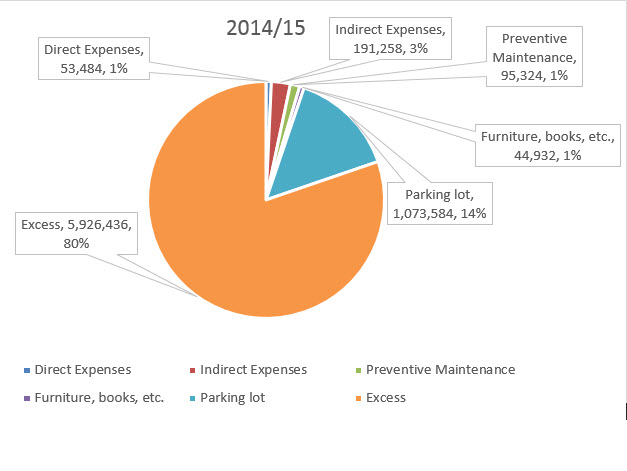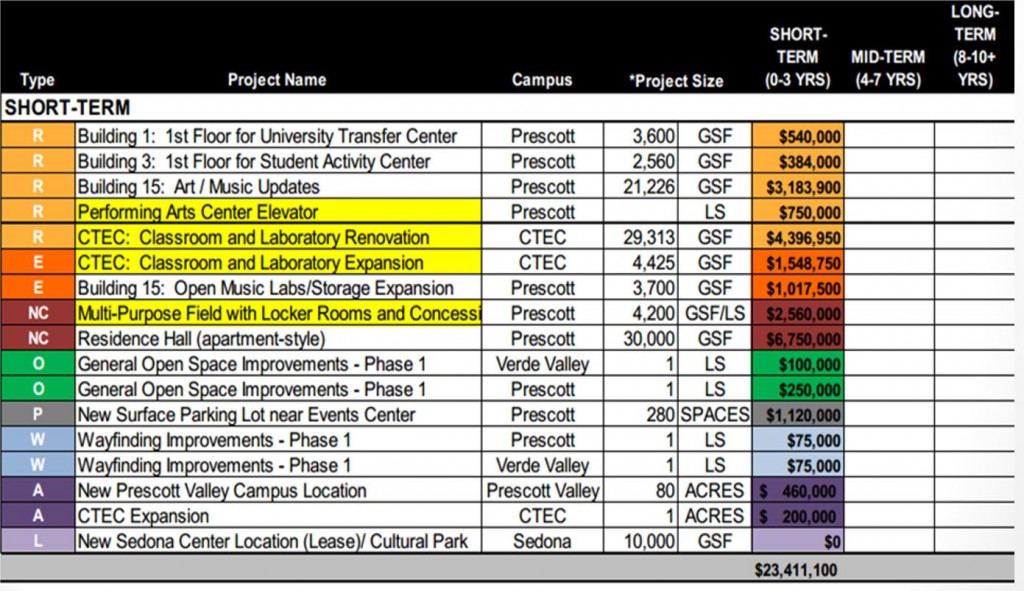80 percent of tax revenue collected in Taxing District not spent on Sedona Center
There is little disagreement over the claim that the Sedona Taxing District annually paid nearly $7 million dollars in 2014/15 in primary and secondary taxes to support Yavapai College. In a document dated October 1, 2015, the College conceded that about 80% of the tax revenue from the Taxing District for 2014/15 will be spent elsewhere. Here are some of the estimates made by the College in that document.
It estimated that it allocated $53,484 in direct costs to the Center. It then estimated, without any details, that it allocated $191,258 in indirect costs to the Center. This brought the total direct and indirect costs to $244,742. It added without any details that it put in $95,324 for preventative maintenance. In addition, it claimed it put in furniture, fixtures, equipment and library books costing $44,932. Since there were virtually no students at the facility, this figure seems questionable.
It also added into its costs the expansion and paving of the parking lot. This is claimed came to $1,073,564. Using the College figures, it appears that $1,458,562 was spent on the Sedona Center. This left $5,926,436 to be used elsewhere. That money found its way to the Prescott campus where it is helping build and renovate a $5 million fine arts building.
The College conceded in writing that it did not have any full-time faculty assigned to the Center during the academic year 2014/15.
 When the Committee asked for the information from Vice President Clint Ewell, he refused to provide it. He claimed that the financial records are not kept by the College in such a way as to provide the information the Committee was seeking.
When the Committee asked for the information from Vice President Clint Ewell, he refused to provide it. He claimed that the financial records are not kept by the College in such a way as to provide the information the Committee was seeking.

 Total staff cuts since 2012 came to 46. A total of 14 new positions have been created since then. This means that about 12/46 or 26% have been restored on campuses on the West side of the County. Two new positions are slated for the Verde Valley in 2016. She did not say how many new positions are slated for the West side of the County om 2016.
Total staff cuts since 2012 came to 46. A total of 14 new positions have been created since then. This means that about 12/46 or 26% have been restored on campuses on the West side of the County. Two new positions are slated for the Verde Valley in 2016. She did not say how many new positions are slated for the West side of the County om 2016. State support accounts for 2% of the total College budget. County property taxes and student tuition and fees account for the bulk of revenue coming to the College each year.
State support accounts for 2% of the total College budget. County property taxes and student tuition and fees account for the bulk of revenue coming to the College each year. Sources who the Blog believes are reliable tell it that the College will receive an additional $300,000 from the State of Arizona this coming year. That should be good news for Yavapai County taxpayers.
Sources who the Blog believes are reliable tell it that the College will receive an additional $300,000 from the State of Arizona this coming year. That should be good news for Yavapai County taxpayers. When asked to provide information regarding the number of lay-offs on the Verde Campus, the Administration said it did not have that information available at the meeting.
When asked to provide information regarding the number of lay-offs on the Verde Campus, the Administration said it did not have that information available at the meeting.

 The General Obligation bonds are approved by voters and used for capital projects. The last time voters in Yavapai County approved General Obligation bonds was in the year 2000 when they approved issuance of $69.5 million dollars in bonds for the Community College.
The General Obligation bonds are approved by voters and used for capital projects. The last time voters in Yavapai County approved General Obligation bonds was in the year 2000 when they approved issuance of $69.5 million dollars in bonds for the Community College.